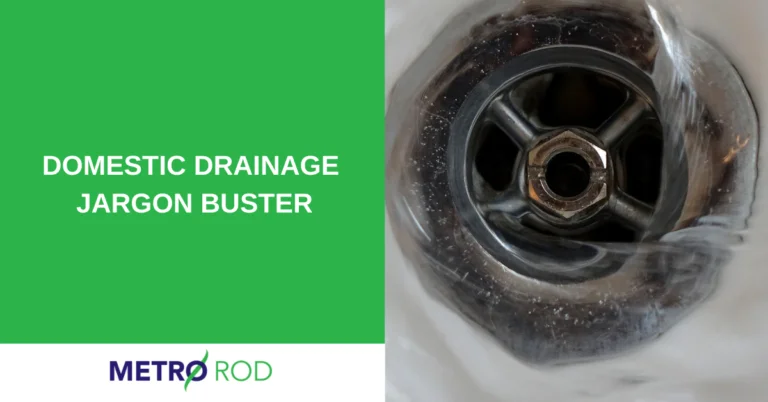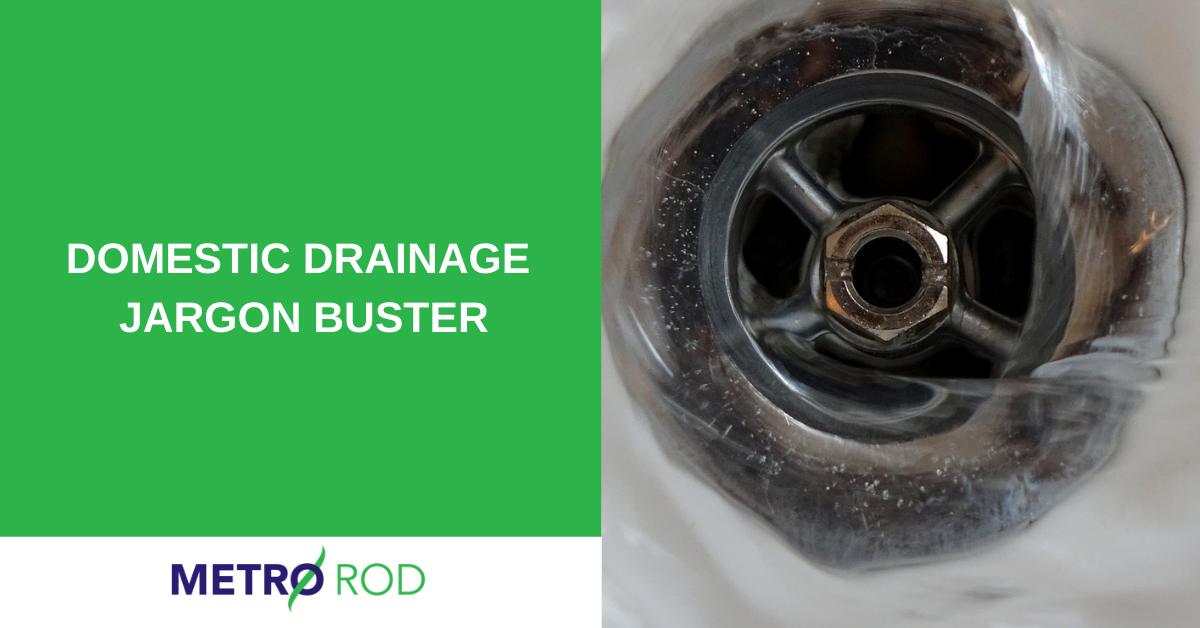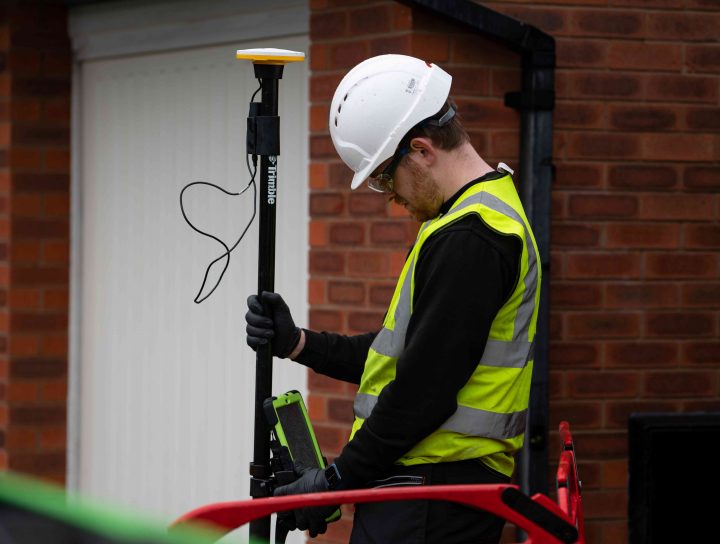If you’ve encountered a drainage problem and have called out an engineer to your home to fix the issue, you might find yourself dumbfounded by terminology that doesn’t make much sense.
Like any industry, drainage can be filled with acronyms and terms that you only get your head around after working in the industry for many years. Hiring an engineer who doesn’t diagnose and explain your drainage problem in plain English can make an already difficult situation even more stressful and lead you to blindly go ahead with work you don’t really understand.
At Metro Rod, our engineers will always talk to you clearly, honestly and in plain English terms, so you know exactly what’s going on at your property. But we want to make drainage simple for everyone so, to help you understand more about drainage systems, and the language an engineer might use, we’ve put together this domestic drainage jargon buster.

Domestic drainage jargon buster:
-
- Waste pipe: A pipe which carries dirty water away from sinks, baths, showers and other appliances. Typically, a waste pipe is small in diameter and may carry dirty water from one or two outlets at a time, for example, a bath and a sink.
-
- Soil and vent pipe: This is a vertical waste pipe, often 100mm in diameter, which can be located either inside a house or outside a house, fixed to an external wall. The soil pipe collects dirty water from a house’s waste pipes and carries it to the underground drains. Soil pipes also have the additional duty of ‘venting’ the drains to prevent a build-up of sewer gasses and allow the drainage system to function correctly.
-
- Drain: An underground pipe serving only one property*
-
- Sewer: A drain carrying water from more than one property*
-
- Public sewer: A sewer which is under the responsibility of a water board or local authority.
-
- Private sewer: A sewer which is under the responsibility of the owner of the building(s) it serves.
-
- Gully: Part of a drainage system which collects rainwater or waste water and releases it to the public sewer or drainage system. It also acts to prevent smells from the drainage system passing back through the pipes and into a property.
-
- FOG: This stands for fats, oils and grease and relates to the gunk found in your drains. This can cause problems within domestic property drains and also in public sewers and treatment plants.
-
- Interceptor traps: A device installed in drains and sewers which prevents sewer gasses from entering houses. Introduced in Victorian times to reduce the risk of Cholera, there are various versions available include a Buchan trap, Winser trap, Bristol trap and Kenon trap. Today, it’s also known as a U-bend.
-
- CCTV survey: An in-depth investigation of a drainage system, using colour CCTV cameras. Trained operators record the drain’s condition using HD video and prepare a report which identifies any defects and makes recommendations for any necessary maintenance or repair work.
-
- Drain rehabilitation: The process of repairing or upgrading existing drainage without the need for excavation. Techniques include patch repairs and full length drain lining.
-
- Patch lining: A popular and cost-effective method of localised drain repair, using a 600mm or 1000mm long resin impregnated fiberglass liner.
-
- Full length liner: A fiberglass membrane which has been impregnated with resin and introduced into the host drain or sewer to provide a seamless full diameter repair along the entire length of the host pipe.
-
- Septic tank: An underground chamber made of concrete, fibreglass or brick through which domestic waste water flows for simple treatment, where a main sewer network is not available. Additional processes treat the effluent and allow it to soak away into the ground through a drainage field.
-
- Drainage field: An arrangement of pipes which allow good bacteria (aerobic bacteria) to treat the waste water emerging from septic tanks efficiently.
-
- Cess pool: A sealed tank that collects wastewater. The tank must be emptied once full as it has no outlet.
-
- Sewage treatment plant: Self-contained units normally buried into the ground which treat raw sewage by allowing good bacteria to treat the waste water.
-
- Soak away: A hole filled with a coarse material to create air gaps which fill with water during rainfall and allow the water to soak into the ground.
*Drains and sewers can carry rainwater only, sewage/wastewater only, or a combination of both.
That’s our domestic drainage jargon buster, to help you understand the language a drainage engineer might use when visiting your home. By understanding these domestic drainage terms, you’ll have a better idea about the problem at your property and how the Metro Rod team can fix it.
We’re here to help you, so if there’s anything about your enquiry or repair process you don’t understand, just ask – our engineers will make sure it’s crystal clear before undertaking any works on your home, so you know exactly what’s about to happen.
For more information on our drainage services, contact your local office or call us on 0800 66 88 00.

Talk to your local Metro Rod specialist
We are always happy to arrange a free site assessment and no obligation quotations for any work you might need. Alternatively, you can call our emergency hotline number on 0800 66 88 00
Get in touch Drainage Services
